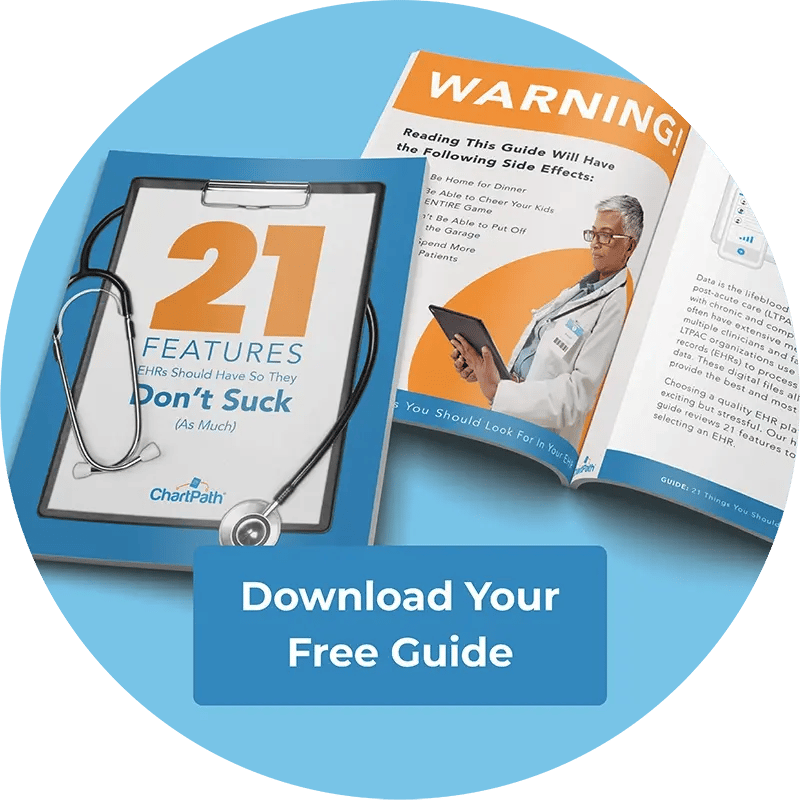LTPAC Accounting: Financial Strategies for Long-Term Care

The LTPAC (long-term and post-acute care) industry provides a higher level of care than assisted living and long-term care facilities. LTPAC facilities are primarily used for the rehabilitation of patients after a major health incident and hospital stay. LTPAC organizations are an essential component of the healthcare system; 40% of Medicare patients discharged from hospitals require LTPAC services.
Because patients typically require LTPAC services after visiting a medical facility, providers should have effective LTPAC accounting systems for revenue cycle management (RCM) and financial health. Patient data is universally stored in electronic health records (EHR). LTPAC accounting systems that integrate well with EHRs help organizations streamline their billing, reimbursement, cost management, financial management, and revenue cycle management. A well-designed and implemented software system is crucial for both high-quality patient care and the financial stability of the organization.
What is LTPAC Accounting—and Why Is It So Complex?
LTPAC accounting deals with the financial aspects of providing long-term care, such as skilled nursing facilities and rehabilitation centers. It is complex for several reasons:
-
Multiple Revenue Sources: LTPAC facilities receive reimbursements from diverse payers, such as insurance companies, private payers, and government programs. Abiding by the different rules and requirements of diverse payers is complicated.
-
Regulatory Compliance: Organizations providing LTPAC must follow the strict regulations of Medicare and Medicaid reimbursements as well as those of other payers. These rules require detailed and accurate financial data management. The rules are modified from time to time, so LTPAC providers must track these changes and have the agility to alter their processes accordingly.
-
Technology Implementation: Most healthcare organizations use EHRs to store patient data. Accounting software must integrate smoothly and effectively with EHRs to streamline LTPAC accounting.
-
Cost Management: LTPAC providers must balance staffing expenses, operational costs, and investments in equipment against revenues to ensure financial stability. LTPAC accounting should aid the organization in deciding about staffing levels, leasing, purchasing, and similar decisions.
Key Challenges in LTPAC Financial Management
The complexity of healthcare operations and regulatory requirements generates several difficulties. Providers must identify the challenges and implement efficient solutions to continue providing effective care while remaining profitable.
Why Regulatory Compliance Is a Strategic Priority
Healthcare providers are required to abide by laws, such as the Health Insurance Portability and Accountability Act of 1996 (HIPAA), that ensure patient safety, quality of care, ethical care, interoperability and data exchange, and privacy of patients' data. The benefits of regulatory compliance include patient safety, higher quality of care, credibility, and the avoidance of legal issues and penalties.
Managing Operational Costs Without Sacrificing Care
Tight budgets are likely to compromise the quality of care. LTPAC providers can adopt several strategies to reduce costs without sacrificing care quality:
-
Efficient management techniques that streamline workflows and minimize overhead.
-
Technological integration to decrease menial tasks, such as investing in a fully integrated EHR and LTPAC accounting system.
-
Automation of repetitive tasks, such as scheduling and payroll.
-
Staff training and retention to decrease costs associated with turnover.
LTPAC providers need good IT infrastructure and software to develop budgets and forecasts. This allows them to predict revenue, balance expenses, and allot reserves to navigate unanticipated challenges. Effective cash flow management is essential for the organization to meet its financial obligations.
Tackling Reimbursement Complexity
For LTPAC providers, reimbursements are the foundation of their revenue stream. Therefore, efficient reimbursement strategies result in a higher bottom line. LTPAC providers can streamline reimbursement procedures by implementing:
-
Technology and Automation: Automated billing systems joined to the EHR system enhance efficiency and reduce errors.
-
Accurate and Error-Free Claims: Optimizing the claim preparation, coding, and submission process reduces rejections and ensures rapid reimbursements.
-
Efficient Revenue Cycle Management: Streamlining the billing and accounts receivable processes reduces delays in reimbursements and improves RCM.
-
Tracking Payer Policies: Keeping track of changing payer policies and requirements is essential to prevent reimbursement issues.
-
Staff Training: LTPAC providers must train their staff to ensure the best billing and coding practices are followed.
LTPAC providers and their personnel should have a deep understanding of the different reimbursement models, such as Medicare and Medicaid, and how they affect their financial performance.
The Role of Technology in Modern LTPAC Accounting
The LTPAC industry has to continually innovate to meet the challenges of working within budgets without reducing the quality of care. Technology increasingly plays a significant role in this balancing act.
User-friendly EHR systems that streamline patient documentation procedures reduce the time required by clinicians and other staff for financial management tasks. It is vital for LTPAC providers to integrate their EHR, billing, and financial software to optimize their processes and improve data accuracy.
Using technology for crucial but repetitive tasks, such as financial management, reduces errors and hastens reimbursements. It also reduces the burden on clinicians and other personnel, allowing them to spend more time and energy on patient care, enhancing staff morale and patient satisfaction.
IT infrastructure enables care coordination and integration within healthcare teams. It also generates data to measure performance and quality. LTPAC accounting software provides data for adverse event reporting, patient safety reporting, and research. Appropriate management and analysis of the data generated by these IT systems enable organizations to make informed decisions about various aspects of workflow, equipment, staffing, and service offerings.
How EHR Systems Support LTPAC Financial Success
Documentation is mandatory for all healthcare organizations and consumes significant time and effort. Recordkeeping contributes significantly to clinician burnout rates, which reached an all-time high of 45% in 2024. Efficient, time-saving EHR systems can save clinicians' time and prevent burnout while addressing the documentation challenges in the LTPAC industry.
Budgets are often tight for LTPAC organizations. Well-implemented EHR systems provide reports and data that support informed decision-making and facilitate robust financial health. The automated billing processes made possible by EHRs reduce errors and accelerate claims submissions, minimizing reimbursement delays. The clinical decision support of an efficient EHR system can also help with LTPAC patient readmission reduction.
ChartPath’s Advantage: Financial Tools Built for LTPAC
LTPAC providers setting out to implement IT infrastructure require clarity about their needs. A range of products with varying EHR features is available, from basic information systems to robust products that support all needs, such as documentation, communication, billing, clinical decision support, and financial reporting. EHR systems must meet interoperability and health information exchange standards required by regulations.
ChartPath has been a leader in technology and automation for the LTPAC industry for several years. Our EHR and billing platform is purpose-built for long-term care environments and reduces revenue leakage while accelerating reimbursements. Our software provides real-time financial insights without overloading the system. To learn more about our products that enable 30% quicker charting and have a 99% satisfaction rating by clinicians, contact us now!
Get Awesome Content Delivered Straight to Your Inbox!
Posts by topic
- EHR
- Better Charting
- LTPAC
- AI
- RCM
- Compliance
- Healthcare Trends
- Press Release
- GUIDE
- reporting
- Artificial Intelligence
- Assisted Living
- Automation
- Behavioral Health
- Business
- Events
- General
- MIPS
- Operations
- Patient Outcomes
- Physician Billing Services
- Population Health Management
- Resumption of Care
- SNF
- TCM
- Value Based Care
- eCR
- interoperability
- partners
- regulations
- regulatory See All See Less




